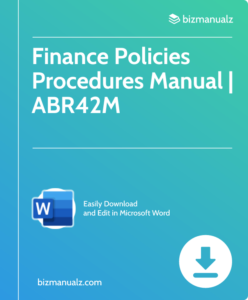What is The Difference Between Business Risk and Financial Risk?

To understand the difference between business risk and financial risk, delve into the introduction. Discover the definitions of both business risk and financial risk. Gain clarity by exploring each sub-section, which covers the definition of business risk and the definition of financial risk. What is the difference between business risk and financial risk?
Definition of Business Risk
Business risk is the danger of loss or harm that businesses can encounter in their operations and decisions. It’s an unavoidable part of running a business, and it can come from both internal and external sources.
- Uncertainty: Business risk is marked by how hard it is to foresee market and economic trends.
- Competition: Businesses must be wary of their competitors as they could snare customers, reduce market share, or disrupt pricing strategies.
- Regulations: Government regulations can create compliance risks, so companies must adjust their practices accordingly.
- Tech: Technology can quickly make existing products or services outdated. Companies must stay up-to-date or risk becoming irrelevant.
- Finances: Changes in costs, credit, interest rates, and exchange rates can make a business financially unstable and unprofitable.
- Operations: Business risks come from inefficiencies, poor supply chain management, quality issues, and not meeting customer expectations.
Other risks may come from geopolitical events, natural disasters, cyber threats, or scandals. Businesses should take a proactive approach to risk management. Risk assessments, contingency plans, diverse revenue streams, and staying informed are key. Plus, keep an eye on KPIs to identify risks early and respond quickly.
Definition of Financial Risk
Financial risk is the potential for financial loss. It can include market volatility, credit risks, liquidity risks, and operational risks. Understanding and managing these risks is essential for businesses to protect investments and stay successful.
Companies must be aware of the different types of financial risks. Market volatility affects asset prices and exchange rates. Credit risks are from borrowers not paying back loans.
Liquidity risks are the ability to pay short-term obligations with cash or assets that can be converted into cash. Operational risks are from internal processes, systems, and human error like technology failures, fraud, and reputation damage.
Organizations need a risk management plan. They should diversify their portfolios by investing in different asset classes and spreading investments across markets and industries.
This reduces exposure to specific risks and increases the chances of a positive return. Regularly monitoring market trends and disruptions can help adjust investment strategies and reduce losses.
Understanding Business Risk
To understand business risk and its distinction from financial risk, delve into the section “Understanding Business Risk”. Discover the factors that contribute to business risk and explore various examples that illustrate potential risks faced by businesses.
Factors contributing to business risk
Various factors contribute to business risk. These can significantly affect the success or failure of a business. Knowing these factors is essential for businesses to manage and minimize risks.
Analyzing these factors can be done by making a table. This can provide a clear understanding of the different elements that businesses must think about.
The table’s columns include:
| Market volatility | Financial instability | Industry competition | Regulatory changes | Technological disruptions |
|---|---|---|---|---|
| Fluctuations in demand, prices, and market conditions | Potential risks of low liquidity or too much debt | Rivals affecting profitability and market share | Shifts in laws and regulations impacting operations and compliance | Developments that make existing products or services obsolete |
Apart from these factors, businesses should consider other details when assessing risks. For instance, geopolitical events such as political instability or trade wars can heavily influence international businesses. Environmental factors like climate change or natural disasters pose risks for industries like agriculture and construction.
Forbes.com states that market volatility is one of the main contributors to corporate risk in today’s fast-paced world.
Understanding the various risk factors allows organizations to make informed decisions and create strategies to increase their chances of success. By carefully looking into these factors, businesses can recognize potential risks and use measures to mitigate them effectively.
Examples of business risk
Businesses face numerous risks that can have a major impact on their running and success. Let’s look at examples of these risks and understand the potential difficulties they present.
To view these examples, we can make a table that shows different business risks with their respective descriptions and potential outcomes. This will offer a clear overview of the varied types of risks businesses face in the modern environment.
| Risk Example | Description | Potential Consequences |
|---|---|---|
| Market Competition | Aggressive competition from other businesses | Reduced market share and decreased profitability |
| Economic Downturn | Slow economic conditions | Lower sales, reduced customer spending |
| Technological Disruption | Rapid advancements in technology | Outdated products/services, loss of competitive edge |
| Cybersecurity Threats | Breaches or assaults on digital systems | Data breaches, financial loss, reputational harm |
| Regulatory Changes | Shifts in government regulations | Compliance challenges, increased costs |
| Supply Chain Disruptions | Interruptions or breakdowns in supply chain | Production delays, inventory shortages |
It is important to remember that these are just a few examples among many others as each business confronts unique risks based on its industry, market conditions, and internal factors.
It is worth noting that cyber threats have become increasingly common in recent times. According to a report by IBM Security and the Ponemon Institute, the average cost of a data breach was $3.86 million in 2020. This underlines the critical need for businesses to prioritize cybersecurity measures and protect themselves against potential breaches.
Knowing business risk is essential for successful decision-making and proactive risk management. By recognizing and dealing with these risks, companies can increase their resilience and maximize their chances of long-term success.
Understanding Financial Risk
To better understand financial risk, delve into the factors contributing to financial risk management and explore real-life examples. Discover how these elements play a crucial role in assessing and managing financial risk. Uncover the key factors that contribute to financial risk and gain insight from practical examples that highlight the importance of mitigating potential financial vulnerabilities.
Factors contributing to financial risk
A table can help to define the influence of factors on financial risk. For example, market volatility can cause losses for investors and companies. Economic instability can affect consumer spending and business investment.
Regulatory changes can change what industries and businesses face, such as increased costs or limited growth opportunities. Poor financial management can lead to cash flow problems or bankruptcy. High debt increases the risk of not making payments.
It is important to also consider other contributing details. Geopolitical tensions, natural disasters, and technological disruptions can affect the financial markets and businesses. Investors’ behavior, such as fear or greed, can cause irrational investment choices and lead to financial losses.
Financial risk is part of any investment or business activity. It cannot be removed completely, but can be managed through diversification, hedging strategies, analysis, and good decision-making.
To understand the extent of financial risks in particular industries and sectors, it is important to seek help from trusted sources. The World Economic Forum’s “Global Risks Report 2021” states that financial risks, like asset bubble bursts and debt crises, are one of the top worries for businesses and governments.
Examples of financial risk
Financial risk means the chance of not getting your desired financial outcomes or losing money. It is vital that people and organizations take note of the different risks they might face so as to make wise decisions and avoid possible losses.
Here are several types of financial risks:
- Market Risk: The danger of financial losses due to changes in market conditions, like variation in interest rates, currency exchange rates, or prices of commodities.
- Credit Risk: Possibility of default by a borrower or partner on their financial duties, leading to losses for lenders or investors.
- Liquidity Risk: Difficulty in meeting short-term financial obligations, which leads to difficulties in selling assets quickly without major losses.
- Operational Risk: Risks from internal processes, systems, or human mistakes that might cause financial losses. Examples include fraud, technology issues, or supply chain problems.
- Reputation Risk: The harm that can come from negative public opinion or loss of trust in an individual or organization. It can significantly affect a company’s performance and value.
It is necessary to be aware of these risks for proper risk management and making sound decisions. By spotting and evaluating potential risks, people and businesses can take appropriate steps to protect themselves.
Furthermore, it is essential to remember that there are other types of financial risks too, including political risk (caused by changes in government policies) and legal risk (related to obeying laws and regulations).
One real-life instance of financial risk was experienced by a multinational corporation that was heavily invested in foreign markets. Due to unpredicted political instability in the country they were based in, their assets were frozen and their operations were disrupted. They therefore suffered huge financial losses and had difficulty recovering.
Key Differences between Business Risk and Financial Risk
To understand the key differences between business risk and financial risk, delve into the section that explores the definition and scope, nature of risks, and impact on organizations. This section will shed light on the distinct characteristics of both risks, providing you with valuable insights for managing them effectively.
Definition and Scope
Business risk and financial risk are two key concepts in finance. They are related, yet have significant distinctions. This article is about the definition and range of these risks.
Business risk is the potential for a company to experience losses or insecurity due to internal or external factors. The sources of this type of risk are numerous, e.g. market conditions, competition, tech changes and regulatory environment. Business risk has two parts: operational risks, related to day-to-day activities, and strategic risks, connected to long-term decisions.
On the contrary, financial risk is focused on the possible effect of financial elements on a company’s operations and benefit. It involves assessing the chance of loss due to interest rates, exchange rates, credit default or liquidity issues. Financial risk is linked to a company’s leverage or borrowing capacity, and is important for its financial health.
Business risk and financial risk both have an impact on a firm’s performance and success. The scope of business risk is wide – it looks at market dynamics, competitive forces and regulations that can affect the whole business. Financial risk examines the influence of financial factors on a company’s profitability and sustainability.
Ray Ball (1995) was the one to introduce these concepts. He provided invaluable advice on the separation between business risk and financial risk.
Nature of Risks
Business risk and financial risk are two distinct risks that companies encounter. Business risk is concerned with the potential losses a business may face in its regular activities, like changes in customer preferences, competition, or technology advances.
On the contrary, financial risk has to do with the potential effect on a company’s financial stability and profitability due to elements such as debt obligations, interest rates, or currency exchange rate shifts.
To explain further the key variances between business risk and financial risk, here is a table:
| Business Risk | Financial Risk | |
|---|---|---|
| Definition | Uncertainty & potential losses linked to business operations | Potential impact on financial stability & profitability |
| Nature | Derived from external market conditions & industry-specific dynamics | Arises due to financial factors |
| Impact on Decision-making Process | Can influence cash flow, profitability, sales, & market position | Can lead to bankruptcy or insolvency |
| Examples | Changes in market demand, new competitors entering the market | Exchange rate fluctuations, loan default |
It is noteworthy that while business risks are vulnerable to external variables outside an organization’s control, financial risks are mainly related to internal financial decisions and conditions.
In conclusion, recognizing the differences between business risk and financial risk is essential for companies’ overall strategic planning. By recognizing these distinctions and successfully managing both types of risks together, businesses can increase their resilience and guarantee long-term success. According to Investopedia.com, financial risk management is essential for corporations functioning under uncertain economic conditions.
Impact on Organizations
The effects of business risk and financial risk on organizations can be huge. To manage them successfully, businesses must recognize the distinctions between them. Let’s look at this table:
| Aspects | Business Risk | Financial Risk |
|---|---|---|
| Definition | The potential for losses or adverse effects on operational efficiency, profitability, and reputation due to internal or external factors | The potential for losses arising from changes in market conditions or financial instability |
From this table, we can see that business risk relates to potential losses or issues in areas such as operational efficiency, profitability, and reputation. Meanwhile, financial risk mainly involves losses from changes in market conditions or economic instability.
It is important to note that business risk can come from both internal and external sources, but financial risk is mostly caused by changes in market and economic conditions. By understanding these differences, organizations can come up with strategies to reduce risks and ensure their sustained performance.
In fact, a Harvard Business Review (HBR) study found that effective management of both business risk and financial risk is essential for sustainable growth and staying ahead of competition in the current business environment.
By being aware of how business risk and financial risk affect organizations in different ways, businesses can make informed decisions and take preemptive steps to limit potential weaknesses. This way, they can make sound strategies and protect their interests while taking advantage of new opportunities.
Importance of Managing Business and Financial Risks
To effectively manage business and financial risks, it is crucial to understand the importance and implement appropriate strategies. In order to mitigate business risk and financial risk, explore strategies that can safeguard your business. Discover effective techniques for mitigating business risk and strategies dedicated to mitigating financial risk.
Strategies for mitigating business risk
Stay ahead of potential threats! Execute a thorough analysis to identify and assess risks. Diversify resources, investments and customers across different sectors or markets. Build strong partnerships for support during hard times.
Get tailored insurance coverage to protect against unexpected events. Create protocols for handling emergencies swiftly. Monitor new risks with employees from different departments. Regularly review and update strategies to stay relevant.
Strategies for mitigating financial risk
Diversification is key – investing in different assets can help reduce market fluctuations’ effect on returns. Hedging using derivatives or insurance can protect against losses in volatile markets. Risk assessment helps businesses avoid risks by taking proactive measures.
Financial planning sets realistic goals, budgets and monitors cash flow. Contingency plans also help, making alternate strategies and back-up plans for unexpected events. Finally, regular monitoring of financial reports and performance metrics can identify warning signs and prompt action.
However, to make risk management more complex, external factors must be considered – like geopolitical and socio-economic changes. The 2008 financial crisis is a testament to this – many businesses failed due to not properly assessing and mitigating financial risks. Bankruptcy and closure were the consequences. This example highlights the importance of effective risk management strategies to ensure business success.
Difference Between Business Risk and Financial Risk
Business risk and financial risk are two important concepts for investors and companies. Business risk covers potential risks resulting from operations, strategies, and reputations. Financial risk relates to the danger of financial losses due to debt levels, interest rates, and market volatility.
Comprehending the differences can help businesses make sensible decisions and reduce risks. Business risk focuses on the company’s functioning and performance, whereas financial risk concentrates on its finances.
Business risks can include competition, shifting consumer tastes, technological advances, and regulatory changes. These risks can affect profits or market position; for instance, a new rival may cause sales to plummet.
Financial risks include excessive debt, liquidity worries, interest rate fluctuations, and foreign exchange exposure. These risks can directly impact a company’s financial stability and ability to meet its commitments. For example, a sharp increase in interest rates could lead to higher borrowing costs for a company with a lot of debt.
To stay ahead in the business world, it’s essential to manage both business and financial risks properly. Identifying and mitigating risks can help companies maximize their chances of long-term success.
Frequently Asked Questions
 1. What is the difference between business risk and financial risk?
1. What is the difference between business risk and financial risk?
Business risk refers to the volatility and uncertainty associated with a company’s operations, such as changes in market conditions, competition, and technology. Financial risk, on the other hand, relates to the possibility of a company’s inability to meet its financial obligations, primarily due to excessive debt or inadequate cash flow.
2. Can you provide an example of business risk?
Sure! Let’s say Company a operates in the retail industry. a business risk for Company a could be the introduction of an innovative competitor with a disruptive technology that drastically changes consumer behavior and reduces demand for Company A’s products or services.
3. How is financial risk different from business risk?
While business risk focuses on aspects related to the company’s operations and external factors, financial risk is concerned with the company’s financial structure and the potential impact on its ability to fulfill financial obligations, such as interest payments and debt repayments.
4. What are the factors that contribute to business risk?
There are several factors that contribute to business risk, including changes in consumer preferences, economic conditions, competition in the market, regulatory environment, technological advancements, and natural disasters.
5. Can you give an example of financial risk?
Of course! Let’s consider Company B, which relies heavily on debt financing and has a significant amount of outstanding loans. If the company experiences a decline in sales or faces unexpected expenses, it may struggle to generate enough cash flow to make its debt payments on time, thereby increasing its financial risk.
6. How can businesses manage or mitigate both business and financial risks?
To manage business risk, companies can diversify their product lines, continuously monitor and adapt to market changes, invest in research and development, and maintain strong customer relationships. Financial risk can be mitigated by maintaining a healthy cash flow, reducing debt levels, obtaining adequate insurance coverage, and creating emergency funds for unexpected expenses.
















Leave a Reply